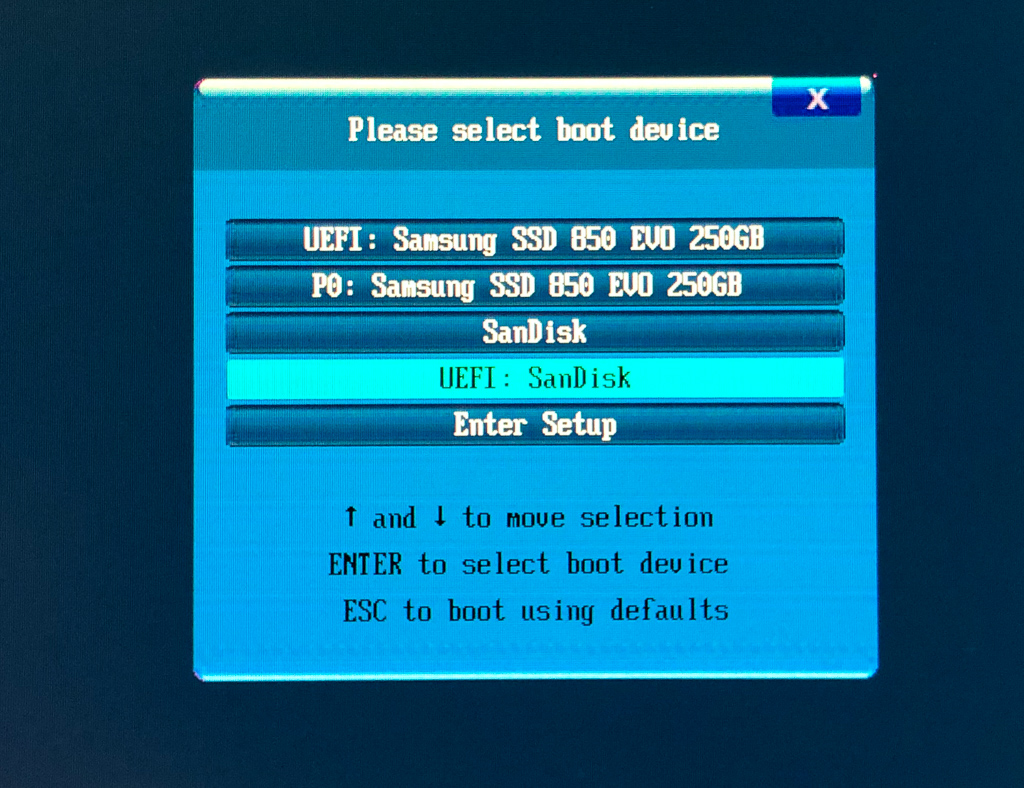

- Iso 2 usb efi booter for mac how to#
- Iso 2 usb efi booter for mac mac os x#
- Iso 2 usb efi booter for mac mac os#
- Iso 2 usb efi booter for mac install#
- Iso 2 usb efi booter for mac 64 Bit#
Iso 2 usb efi booter for mac mac os#
UNetbootin is a free, open source utility that allows you to create bootable USB drives on Windows, Linux, and Mac OS X. Create a bootable USB drive for macOS X versions including El Capitan, Yosemite, Mavericks, Sierra, High Sierra, Mojave, Catalina and Big Sur. It is thought as one of best, free, open-source and easy-to-use Windows 10 USB tool since it can create bootable USB for different kinds of operating systems. To create bootable USB from ISO, some of you may choose to use USB bootable software like Rufus. For this, you need to keep a USB with the.iso file downloaded in it.

UNetbootin is a Windows 10 USB tool Mac that is completely free to use and can be used in a scenario wherein you have to make bootable USB Windows 10 on Mac system.
:max_bytes(150000):strip_icc()/rEFInd-588b99573df78caebc55170a.jpg)
First, make sure the dmg file you downloaded is valid. I managed to create two bootable USB from macOS Mojave and Catalina DMG file and successfully installed them on respect Mac. Method 1: Create Windows 10 Bootable USB on Mac Using UNetbottinįor those who failed to create bootable USB with TransMac, take a look at UUByte DMG Editor.
Iso 2 usb efi booter for mac how to#
In this tutorial we’ll show you how to create Windows 10 bootable USB from ISO on Mac, by using the Terminal or third-party software like UNetbottin. How can I make a bootable Windows installation USB on Mac OS X? After upgrading to macOS Mojave, you may find that Boot Camp Assistant is no longer supported and thus creating a bootable USB turns out to be a little bit challenging.
Iso 2 usb efi booter for mac mac os x#
Download Mac OS X Snow Leopard 10.6 ISO and DMG direct file. Mac Computer with intel processor supporting X84-64-bit architecture.
Iso 2 usb efi booter for mac install#
Sudo apt-get install mactel-boot hfsprogs gdisk grub-efi- ia32 Once booted (that was probably a bit painful if you are not using a qwerty), continue following the instructions (reformatting /dev/sda1 to HFS+, installing grub and blessing the HFS+ partition) but replace these 2 commands to target 32 bit EFI (where the original guide targets 64 bits - also note that the vmlinuz file was not ending with. You should arrive at a failing grub console follow the instructions here thorougly: This can unfortunately not be fixed using a chroot (i tried, but grub-install fails, complaining that efibootmgr is not present), so you must reboot, and manually boot. However, grub installation will fail it wouldn’t boot anyway because the mac firmware expects the EFI partition (/dev/sda1) to be a specially “blessed” HFS+ partition (instead of modern/standard UEFI which expects a EF00 type FAT32 first partition) it also expects some hardcoded files to be present.

This should allow to boot the Ubuntu live USB (tested with lubuntu 16.04.2 32 bits) - remember to select the Macintosh keyboard variant during install.
Iso 2 usb efi booter for mac 64 Bit#
The reason seems to be that, regardless of CPU 64 bit support, the EFI implementation of these early mactels is 32-bit only, not to mention many other apple-specific quircks which prevent compatibility. I didn’t expect it to be so difficult, but it eventually panned out.Ĭurrent Linux distros USB sticks won’t be detected by the bootloader (hold the alt key after power) of the venerable 2006 MacBook (A1181 ref, CPU is a Core 2 T7200). This aging device has an unsupported OS, and you can’t even upgrade your web browser anymore, which means that Linux is the last breath for it.


 0 kommentar(er)
0 kommentar(er)
